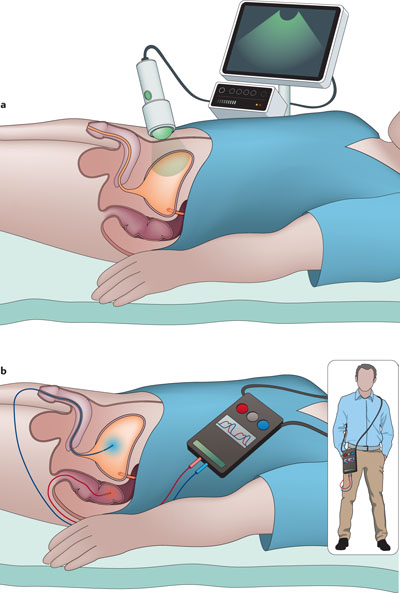 Urodynamics can be defined as the functional evaluation of the lower urinary tract (bladder, urethra and external sphincter, also including the pelvic floor) in a quantified way using recording instruments in relation to the mechanisms of bladder filling and emptying, determining the existence of pathology to finally lay the therapeutic foundations in each case.
Urodynamics can be defined as the functional evaluation of the lower urinary tract (bladder, urethra and external sphincter, also including the pelvic floor) in a quantified way using recording instruments in relation to the mechanisms of bladder filling and emptying, determining the existence of pathology to finally lay the therapeutic foundations in each case.
The current development of Urodynamics is fundamentally due to a better knowledge of the neurophysiology of the urinary system and the application of computer technology to the analysis of the data obtained. Carrying out a correct medical history and physical examination is essential before performing the urodynamic study.
The urodynamic techniques used to study the function of the lower urinary tract are:
- Flowmetry with or without perineal electromyography (EMG)
- Cystomanometry (filling phase) with EMG
- Pressure / Flow Studies (voiding phase) with EMG and measurement of cervico-urethral activity (DURR)
- Urethral pressure profile
- Perineal Electromyography (EMG)
Although Urodynamics was born to assess neurourological problems, today it continues to have a fundamental value in the diagnosis and treatment of the “neurogenic bladder” in patients with urological problems that present cerebrovascular accidents, multiple sclerosis, Parkinson’s disease, diabetic neuropathy, alterations congenital such as myelomeningocele and spinal cord injuries.
In women, although the symptoms allow suspecting the nature of the functional disorder, it is not sufficient or conclusive. Therefore, a urodynamic assessment is essential in the following cases:
- Women with stress-related incontinence (coughing, running, jumping, etc.) to objectively assess the intensity of incontinence, because the type of treatment (conservative or surgical) will depend on it.
- In women with symptoms of urinary urgency and urgency-incontinence to show the existence of “hyperactivity of the bladder” and its characteristics whose treatment will be pharmacological.
- In women with urinary tract infections and prolapse of the bladder (cystocele), rectum (rectocele) and uterus (uterocele), the filling phase and emptying pattern should be evaluated. If it is altered, differentiate an obstruction from a weak contraction of the bladder.
- In men with benign prostatic hyperplasia (BPH), the diagnostic value of urodynamics is essential, being the only test capable of confirming or ruling out the existence of prostate obstruction and differentiating it from a bladder with decreased bladder contractility. The type of treatment (pharmacological or surgical) will depend on this.
A very useful test is flowmetry. The study is carried out by means of the patient’s free urination in a device (Uroflowmeter). This non-invasive procedure is recommended by the WHO when prostate hypertrophy is suspected to assess voiding flow.
Cystomanometry studies the bladder filling phase, being important to assess the existence of “hyperactivity of the bladder” (involuntary contractions of the bladder) that causes symptoms of urgency and frequency of voiding, usually secondary to benign prostatic hyperplasia. If in these cases no obstruction to the voiding flow is demonstrated, pharmacological treatment will be done.
The Pressure / Flow study studies the voiding phase, being essential for the diagnosis of prostate obstruction. Modern analytical methods not only perform the diagnosis of obstruction but are also capable of assessing the type of obstruction and quantifying it to varying degrees. The study is completed with the measurement of the contractile capacity of the bladder.